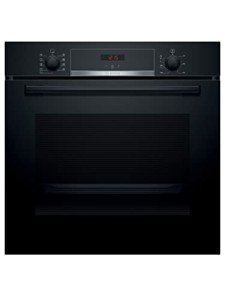The Little-Known Benefits To Integrated Cooker And Hob
The Rise of Integrated Cookers and Hobs: A Comprehensive Guide
In the modern kitchen, performance, style, and space optimization are key considerations for property owners and striving chefs alike. Among the most significant patterns in kitchen design is the increasing popularity of integrated cookers and hobs. These appliances not just improve the cooking experience however also raise the visual appeals of the kitchen area. This post checks out the characteristics, advantages, features, and considerations surrounding integrated cookers and hobs, offering readers with a comprehensive understanding of their advantages.
What Are Integrated Cookers and Hobs?
Integrated cookers and hobs describe cooking appliances that are built into the kitchen cabinets, offering a seamless appearance and optimizing using space. Integrated appliances are developed to mix with the aesthetic of the kitchen instead of standing out like traditional designs.
Types of Integrated Cookers and Hobs
Generally, integrated cooking appliances consist of:
- Integrated Hobs: These are cooktops that fit flush into the kitchen counter top. They can be gas, electric, induction, or a combination of these technologies.
- Integrated Ovens: Built directly into the cabinetry, integrated ovens can come as single, double, or multifunctional models, using varied cooking capabilities.
- Mix Units: Some designs combine an oven and hob into a single device, using a compact solution for smaller sized cooking areas.
Advantages of Integrated Cookers and Hobs
1. Space Optimization
Integrated cookers and hobs are ideal for small kitchen locations. By embedding the cooking appliances into kitchen cabinetry, homeowners can use their kitchen space more efficiently, leaving more room for meal preparation and movement.
2. Visual Appeal
These appliances supply a smooth and contemporary want to the kitchen. The ability to select surfaces and integrate them into the surrounding cabinetry develops a unified style that enhances the general look of the kitchen.
3. Enhanced Functionality
Integrated cookers and hobs often include advanced technology functions, such as clever controls, timers, and cooking presets, enhancing user experience and allowing efficient cooking.
4. Enhanced Safety
Lots of integrated hobs feature precaution such as kid locks and automated shut-off functions. This makes them much safer than conventional freestanding models, especially in households with kids.
5. Increased Resale Value
Modern homes with integrated appliances typically bring in greater resale values. Possible purchasers try to find smooth designs and contemporary conveniences, making integrated cooks and hobs a sensible investment.
Functions to Consider When Choosing Integrated Cookers and Hobs
When choosing integrated cookers and hobs, a number of functions ought to be considered:
1. Cooking Technology
- Induction: Provides quick and efficient cooking, easy to clean, and provides exact temperature control.
- Gas: Offers conventional cooking advantages with instantaneous heat but requires appropriate ventilation.
- Electric: Provides consistent heat and is readily available in different styles.
2. Size and Configuration
- Oven Capacity: Should be enough for the household's cooking requirements.
- Hob Size: Depending on the variety of burners/vessels needed for simultaneous cooking.
3. Control Mechanisms
- Touch Controls: Provide a smooth look and ease of cleaning.
- Knob Controls: Offer tactile feedback and are easy to use.
4. Finish and Style
Integrated cookers and hobs can be found in different surfaces, including stainless-steel, black glass, and even adjustable alternatives to match cabinets.
5. Energy Efficiency
Go with energy-efficient designs that can conserve on energy costs and lower ecological effect.
Upkeep and Care
To preserve the efficiency and longevity of integrated cookers and hobs, routine upkeep is key:
- Clean the surface areas: Regularly clean down the hob and oven surfaces to avoid residue build-up.
- Check seals and gaskets: Ensure that oven seals are undamaged for efficient cooking.
- Service routinely: Schedule expert upkeep to keep the appliances in top shape.
FAQs
1. What is the distinction between built-in and integrated cookers?
Response: Built-in cookers are designed to be installed within kitchen cabinets, whereas integrated cookers are produced to effortlessly blend with the kitchen cabinetry for a more cohesive appearance.
2. Are integrated Ovens And Hobs ?
Response: Generally, integrated appliances might have a greater in advance cost compared to freestanding systems due to the fact that of their design and the installation requirements. Nevertheless, they can use long-lasting savings in energy efficiency.
3. Can I install integrated cookers and hobs myself?
Answer: While some house owners might have the ability to handle the installation themselves, hiring an expert is advised to ensure proper fit and function, especially for gas appliances.
4. Are integrated cookers and hobs simpler to clean?
Answer: Integrated hobs normally have less crevices, making them simpler to clean. Nevertheless, the particular cleansing requirements will depend upon the products utilized in the appliance.
5. What should I examine before buying?
Answer: Check the size of your kitchen area, cooking needs, energy effectiveness ratings, and compatibility with existing kitchen cabinetry.
Integrated cookers and hobs are ending up being significantly preferred in contemporary kitchens, combining performance with aesthetic appeal. By understanding their benefits, features, and maintenance requirements, homeowners can make educated choices when picking the right appliances for their cooking spaces. As trends in kitchen design continue to evolve, integrated cooking services will likely remain at the leading edge of home innovation, assuring both practicality and style.
